
|   |

|   |
 e-mail: ukb7@rediffmail.com Pickle Factory's Potpourri Photos: Dr. Golam Ashraf December 3, 2019 In the early 1960s, Martin Luther King II announced, standing under the shadows of Abe Lincoln's Memorial in Washington, DC, to the Blacks of the States: I have a dream... Over half a century later in the late 2010s, Vikram Iyenger too declared, standing beside the ruins of the dilapidated Gem Cinema in Central Kolkata, to the art-lovers of the eastern metropolis: I have a dream...If King had contemplated the much larger domain of freedom from the bondage of slavery for his people, the vision of Iyengar, a renowned Kathak dancer groomed under Rani Karnaa, was: "A hub for the practice, discourse and presentation of dance and movement-work in Kolkata ... a space to think, know, talk, imagine dance ... a home in a country that boasts of innumerable movement expressions from dance to martial arts." He elaborated, "This is the big dream, and we invite everyone to join us on this adventure..." Unlike the American Black's freedom from bondage, Iyengar's habitat for the art of dance has not yet materialized, the Gem's site having proved to be too huge and too ramshackle, and there being no other site currently in view. Yet, Iyengar and his 'Pickle Factory' - a name he coined from a chance visit to a Chinese friend's factory for manufacturing sauce - have pressed on regardless in their quest. Meanwhile, since 2018, Pickle Factory has been offering a delectable dance fair to the dilettante of the city. Only from August 2018 to October 2019, there have been 30 programmes; artistes have participated from the USA, the Philippines, Lithuania, Switzerland, China, Wales and Australia, apart from India; there have been 11 partners and 8 venues have been explored in Kolkata, Delhi and Bolpur (Shantiniketan). This critic witnessed three major events and here is the overview. Cat's Cradle 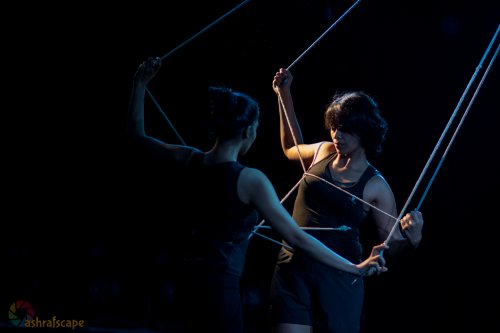 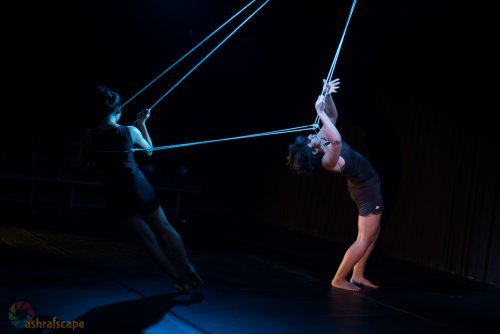 The children's game of 'Cat's Cradle' - played with an endless loop of string between two partners to create 'Cat's Whisker', 'Kingfisher' and innumerable other patterns, besides any number of squares, rectangles and rhomboids - is too familiar and universal, to be dilated upon. The Delhi-based, well trained Bharatanatyam dancer Vaishnavi Mannava - with experiments in performance in unconventional spaces, such as public gardens, house parties, public bars and clubs, to her credit -- partnered with Greeny Francis (with some exposure to Bharatanatyam) to visualize the childhood game on a much larger dimension. While the two dancers used only their body and held on to the rope, the latter was passed through a hook fixed quite high up and was manipulated most dexterously by the two, allowing their bodies to form multiple patterns. There emerged a plethora of geometric triangles and oblong forms, both made of rope contortions and their torsos forming arches, supine figures and tensed, contorted limbs. The performed patterns and movements, the pauses and the frenzied aerobatic movements, seen together, brought alive tensions and counter-tensions; dominance and subjugation; surrender and assault; one's imagination and the other's split-second reaction; the desire to crush as well as to liberate each other. The rope became the tool to explore, as Vaishnavi explained, "the nature of vulnerability as a game of dependence, inter-dependence and independence; and as a total function of co-dependency between our bodies". The performers and the viewers shared the excitement of the infinite possibilities that the rope had to offer, as it hung from the ceiling and traversed across the arena in endless directions. The S.K.U.M. Manifesto 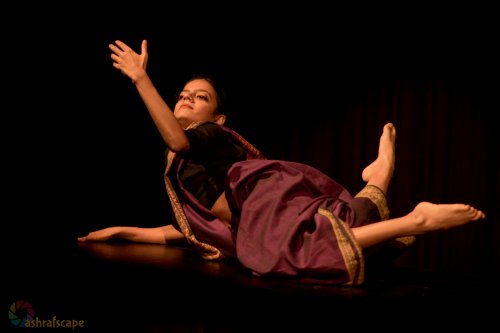 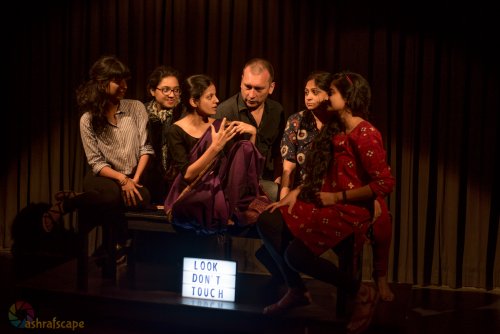 The title stood for the 'Society against Kama Sutra and Uncouth Men' and the whole piece was designed to lampoon and castigate the dark, dark world of sex acts. Sex manuals usually present a guide to sex positions and have a long history. In the Greco-Roman era, a sex manual was written by possibly a courtesan of the Hellenistic period (3rd-1st century BC). The Kama Sutra of Vatsyayana, believed to have been written between the 1st and 6th centuries AD, had a mixed reputation as the oldest surviving Indian text on erotic love. Composed as a sutra genre text with terse aphorisms that survived into the modern era, it was a blend of prose and poetic verses, listing desire, sexuality and emotional fulfillment as one of the proper goals of life. In the solo performance of S.K.U.D., the Delhi-based dancer Urvi Vora - with grooming in Jazz and Ballet from Delhi's Russian Centre of Ballet, but apparently without much exposure to Indian dance - launched her programme by draping herself in saree atop her skimpy body suit in full view of the spectators and setting the tone of her radical feminism. Prior to the performance, she called the members of the audience to receive numbered flash cards and to call out the numbers ad seriatim. It was immediately obvious that these numbers referred to the sequence in which any particular "sex act" - as defined by Kama Shastra -- was to be "performed." Lying on her back on the high-rise platform, she simulated the female partner's role - strictly as laid down in Vatsyayana's manual -- as vividly described in each flash card, read out by the audience member. The dancer allowed her saree to roll down below her knees in the process, presumably to lend an aura of reality! A number of "sex acts" were simulated thus-against the allotted time-span of 45 minutes, strictly overseen by a highly visible digital stopwatch. The finale was a group simulation, in which audience members were invited to freely participate, regardless of gender. "I conceived the performance in light of the #MeToo movement in India and looked at the directives given in Kama Sutra through the lens of a feminist", declared Vora. Clearly, this was a brand of radical feminism, as rooted in the wider radical contemporary movement of our times. Radical feminism is credited, no doubt, with the use of consciousness raising groups to raise awareness of women's oppression, to which was added a focus on sexuality, in certain cultures, particularly in Mediterranean countries influenced by Roman Catholicism, with traditional ideas of masculinity and female purity. This has led to what many interpret as a "double standard" between male and female sexuality; men are expected to be sexually assertive as a way of affirming their masculinity, but for a woman to be considered 'good,' she must remain pure and docile. At the level of an idea, Vora's brave presentation made ample sense, as a piece of radical feminism. But whether it transgressed the boundaries of the aesthetics of dance, remained wide open to doubt. Underground 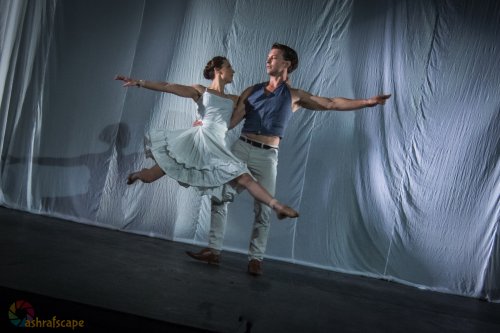 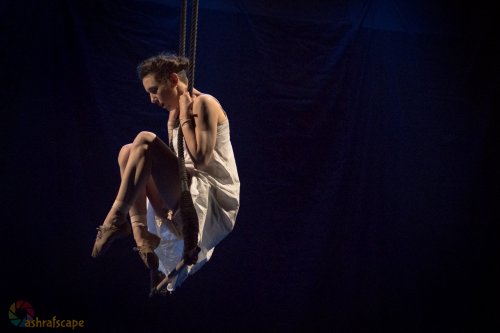 Fyodor Dostoyevsky's two-part novella, Notes from the Underground, was written in 1864 during the turbulent times of burgeoning revolutionary activities and general restructuring of stardom where an unwieldy autocracy only induced a greater sense of tension in both politics and civil society. Regarded as one of the first existentialist novels, the work earned the title of "probably the most important single source of the modern dystopia." The main issue for the "Underground Man" was that he has reached a point of ennui and inactivity. Underground presented by Brisbane-based David Carberry - trained extensively by Russian, Chinese and Australian masters including Lu Guang Rang (NICA) and Kim Walker (NAISDA) - was inspired by the rambling memoirs of a bitter, isolated, unnamed narrator (generally referred to by critics as the Underground Man) in Dostoyevsky's masterpiece. In Carberry's own words, "My piece is an abstract expedition through the layers of human desires and motives; a look at what lies beneath, at what really drives us in the search for truth. It is a reflection on the quirky, comical and sometimes dark nature of the human disposition to always question, to push, to strive, to fail and to push again..." The dance narrative comprised a fascinating collage of extensive pas de deux movements between David Carberry and his female partner Alice Muntz. Carberry's initial depiction of the brooding Underground Man was followed by engagements with pieces of paper pieces and sundry other connections with a piano, a typewriter, glass bottles, sand and other interesting and unusual instruments. Indeed, the interaction with the multiple objects almost made the latter a third partner in the whole performance, mostly serving as a counterfoil in the engagements of the woman with her man and to resist all her efforts to "connect." In the performance, the abstraction from Dostoyevsky's Part I of Underground -- mostly comprising an introspective statement on the moral and intellectual fluctuation where the narrator mumbles along with his conscious insecurities regarding inertia and inaction -- is given a short shrift in Carberry's treatment, ending with his solitary acrobatic act and playing idly with the paper-pieces and the rope on the ground. In contrast, the novella's Part II is lit up by Liza, the girl of uncertain virtues, wearing a frilly skirt, emerging from her house of ill repute through an appropriate shadow-play into the life of the Underground Man. Her boisterous trapeze act and Hoopla Hoop dance is possibly reflective of her assurance at being enthralled by the Underground Man's seemingly poignant grasp of the destructive nature of society. But when she does physically turn up in his life, there is either thwarted "I love ..." which he is never able to utter or, later, her desperate bid to say, "He writes ..." which he pointedly rebuffs every time. The virtual pas de trios that Carnberry, Muntz (as Liza) and the lifeless objects form and dissolve in countless dance moves makes the entire show utterly fascinating to watch and deserving of the standing ovation it received.  Dr. Utpal K Banerjee is a scholar-commentator on performing arts over last four decades. He has authored 23 books on Indian art and culture, and 10 on Tagore studies. He served IGNCA as National Project Director, was a Tagore Research Scholar and is recipient of Padma Shri. Post your comments Please provide your name and email id when you use the Anonymous profile in the blog to post a comment. All appropriate comments posted with name and email id in the blog will also be featured in the site. |